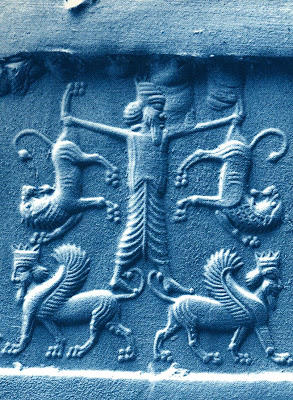Introduction
It is imperative to mention that the analysis of ancient works is incredibly important because it enhances the understanding of the traditions and values of the people. “The Epic of Gilgamesh” is regarded as one of the first pieces of literature. The story is not complicated and has a simple structure, but it was a vital step in the development of the genre. Moreover, it is entirely possible that it has inspired many other works over the years. Furthermore, it would be reasonable to discuss the origins of the piece.
History
The epic has originated in Mesopotamia, and the myths are focused on the actual ruler of that time. He was a leader of Uruk close to 2700 BCE and has inspired many tales that have led to the creation of “the Epic of Gilgamesh.” People wanted to share their experiences, but it can be seen that many aspects of the story are exaggerated. It is necessary to note that several versions of the story are available, and researchers did not discover all the tablets.
Some of them were found in the library of Ashurbanipal, and it has helped to decipher many parts of the story. Pieces of the epic were spotted in other locations, but they were severely damaged most of the time (Damrosch, 2007). George Smith is an important figure because he was the first modern person that has read the piece and drawn the attention to the epic (Davis, 2014).
Summary
The story starts with the introduction of Gilgamesh and his achievements. He is portrayed as a demigod that has outstanding power and charisma. The story suggests that he has built a wall that protects the city (Reilly, 2012). It is noted that he was a rather cruel ruler and disregarded the rights of other people. People were not satisfied with the situation because they were abused and exploited. The story suggests that the gods understood that they must control Gilgamesh and have created an individual named Enkidu, who could rival the demigod’s strength.
The wild man is introduced to the new world and slowly adapts. He decided to fight with Gilgamesh because he believed that he could end his reign. Enkidu was not victorious, but they became close friends after a fierce battle. They combine their strengths to defeat dangerous creatures, and it angers the gods. Gilgamesh suffers when Enkidu dies because of a disease. He realized that he is not immortal and made a decision to travel and find possible solutions.
His journey was rather long, but he has managed to find a secret temple that was located close to the end of the world. He meets a character names Utnapishtim and asks him questions about immortality, and shows him that he will not be able to defeat death because he cannot overcome the desire to sleep. Nevertheless, Gilgamesh heard about a plant that could make a person much younger and decides to test it to ensure that it is not poisonous. However, it was stolen, and the hero was worried that he lost his last option that could grant immortality. The last tablet is the most interesting because it is rather inconsistent. Nevertheless, it is focused on the journey to the underworld and his relationships with Enkidu.
Art Interpretation
The piece is rather interesting because it highlights the fact that Gilgamesh was able to control animals. The creatures shown are unrealistic, and the central idea of the seal image is that he is a master of beasts. It is clear that he was viewed as a superior being. The story suggests that he had enormous strengths. However, he is shown as a relatively skinny person. Another fascinating aspect that should be noted is that he is the most attractive man in the world according to the story.
Furthermore, the piece of art indicated that standards of beauty differed significantly. The clothing also needs to be discussed because it is an important part of the culture. His outfit is relatively simple, and one may argue that it does not fit an individual that holds such a position (Gilgamesh, n.d.). The problem is that the author of the work is not known, and it is not possible to state that this interpretation reflects the way other people viewed Gilgamesh. Furthermore, it is not clear which part of the epic is described. Nevertheless, it needs to be analyzed and compared to other depictions to expand knowledge.
Conclusion
In summary, it is possible to state that this work is incredibly important because it helps to get a better understanding of traditions and beliefs at that time. Moreover, it highlights the fact that people were trying to explain the events with the use of such concepts as a higher power. The exploration of such topics as mortality and underworld is also fascinating and indicates that the Mesopotamian culture was well-developed. Overall, the combination of such findings is intriguing, and the epic can be viewed as a masterpiece.

Works Cited
Damrosch, D. (2007). The buried book: The Loss and rediscovery of the Great Epic of Gilgamesh. New York, NY: Henry Holt and Company.
Gilgamesh[Image]. (n.d.). Web.
Davis, G. J. (2014). Gilgamesh, the new translation. Bridgeport, CT: Insignia Publishing.
Reilly, K. (2012). The human journey: A concise introduction to world history. Lanham, MD: Rowman & Littlefield Publishing.